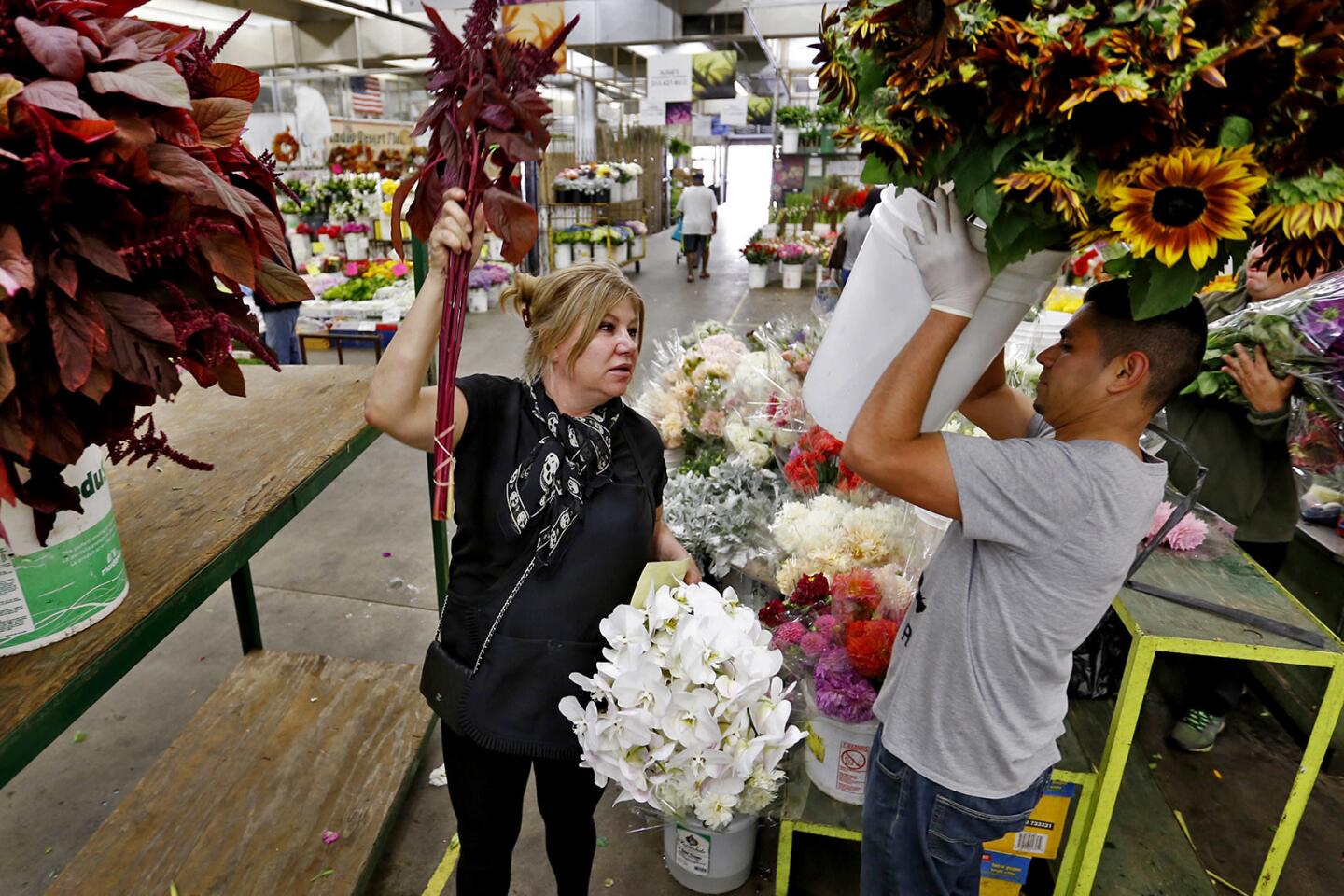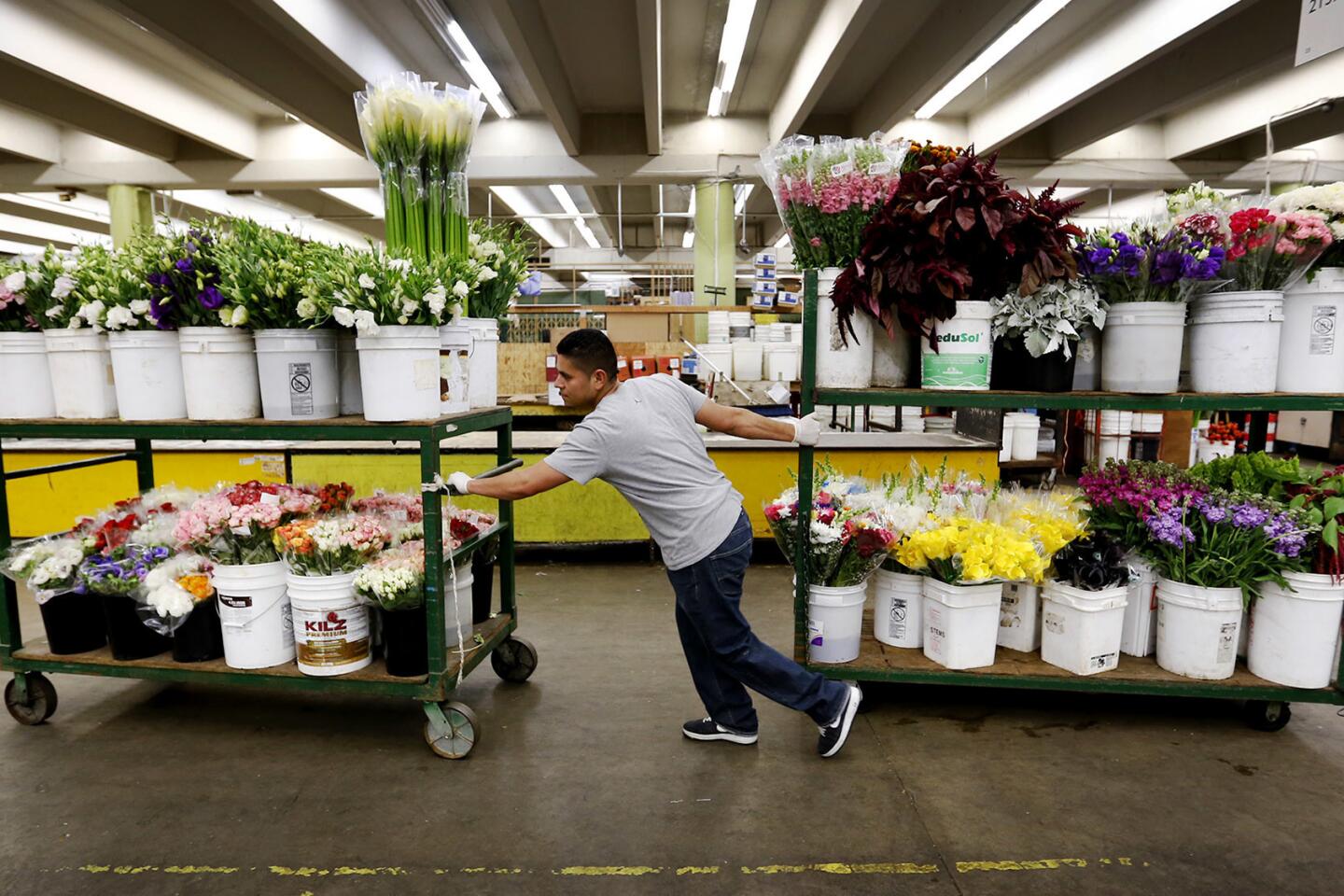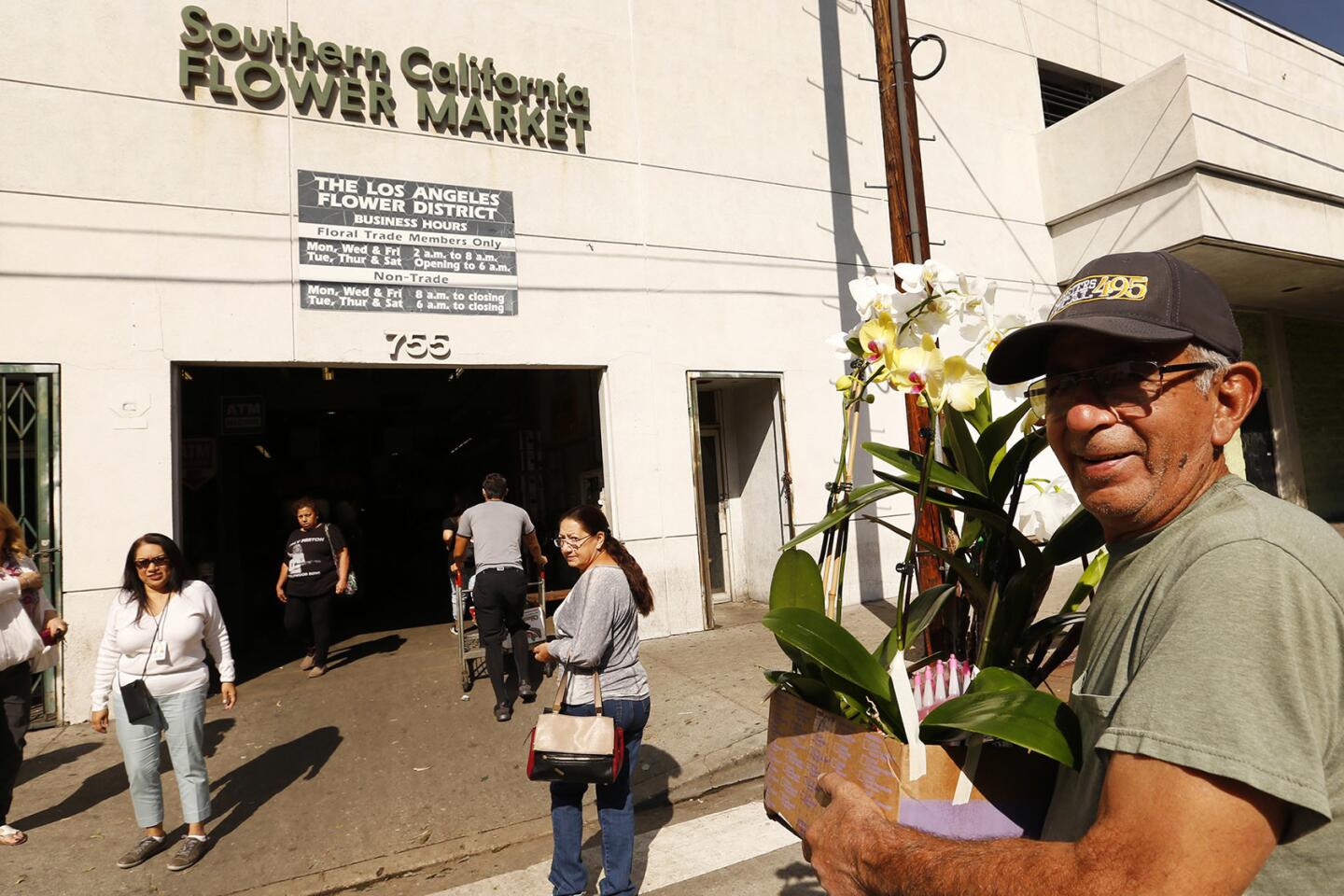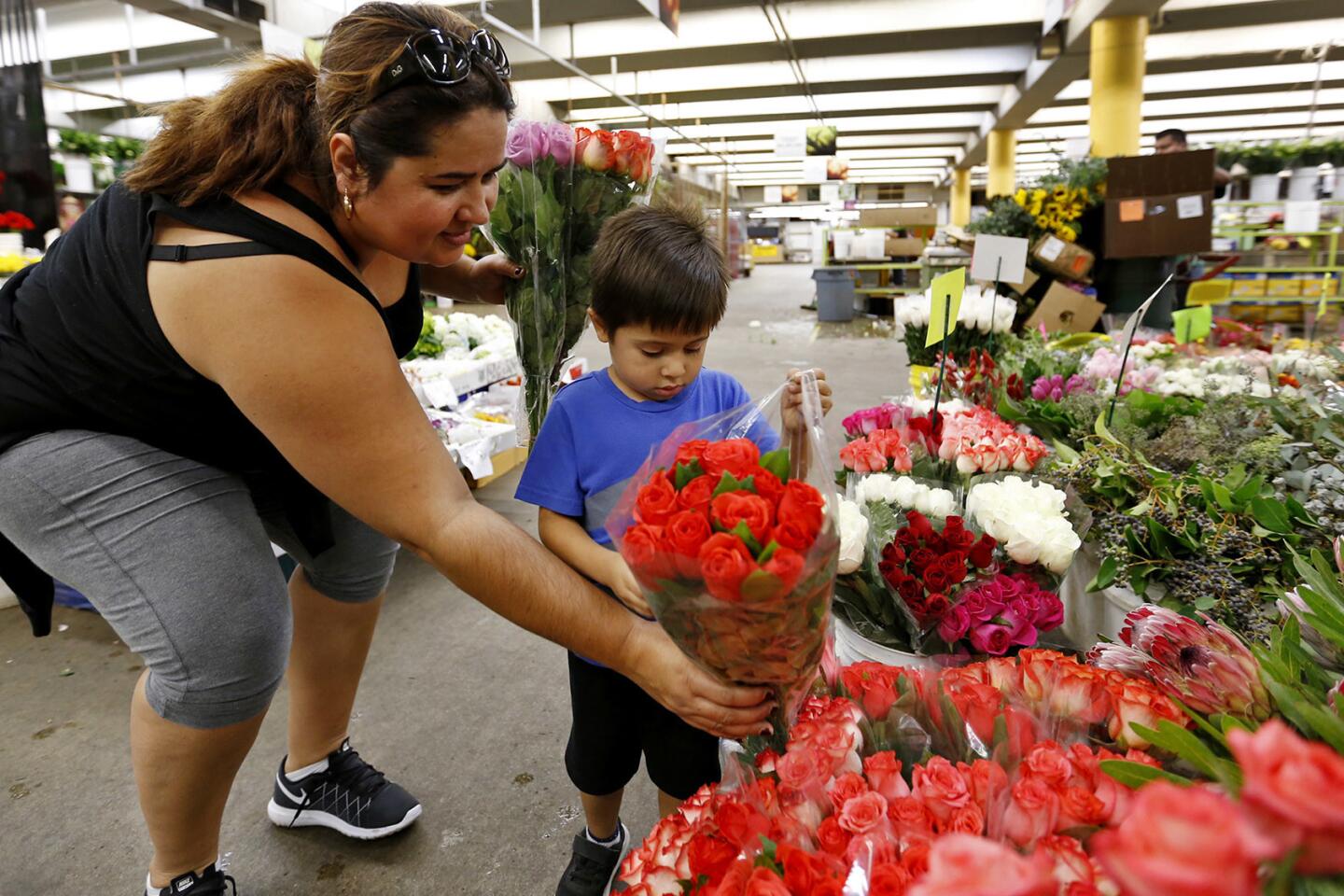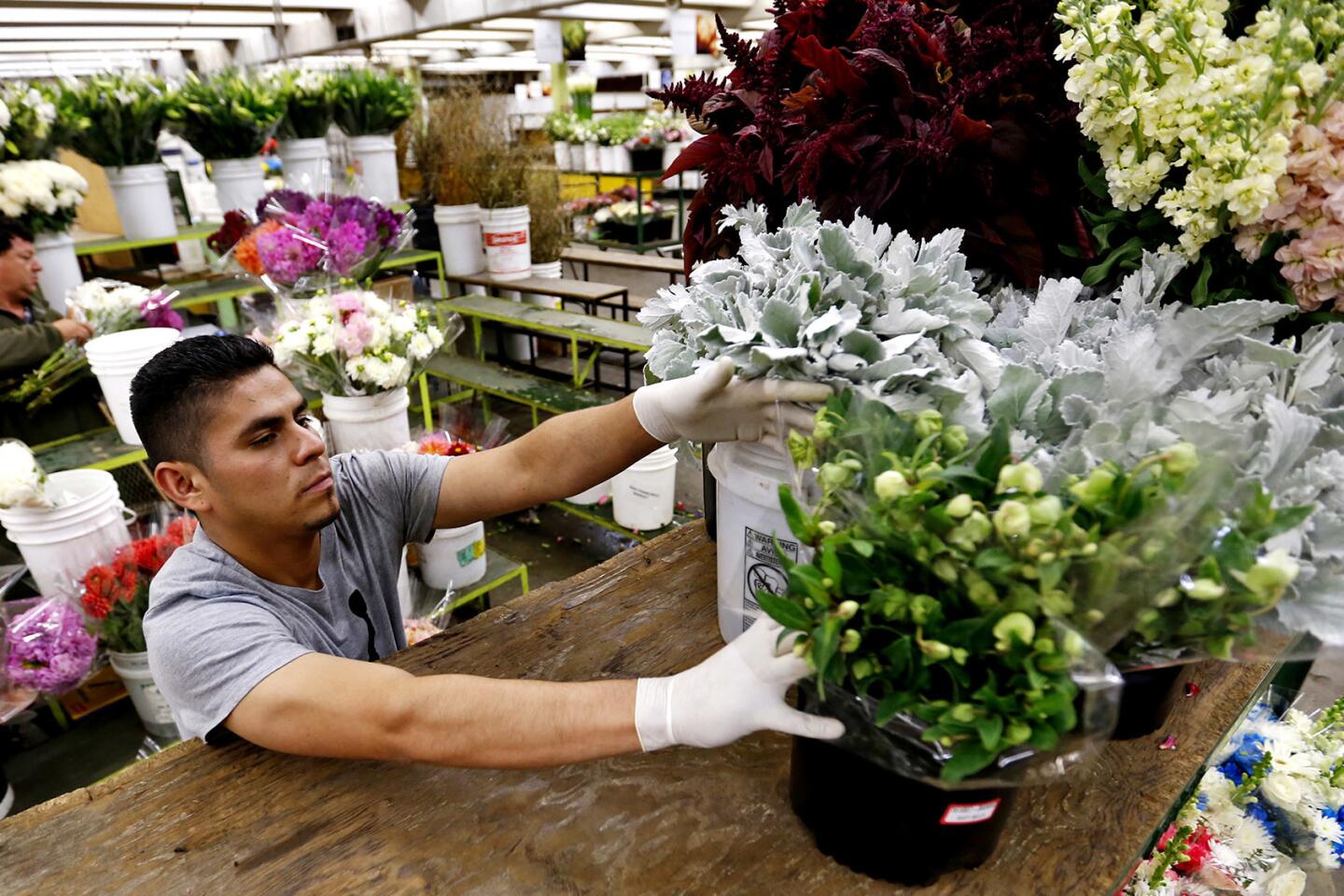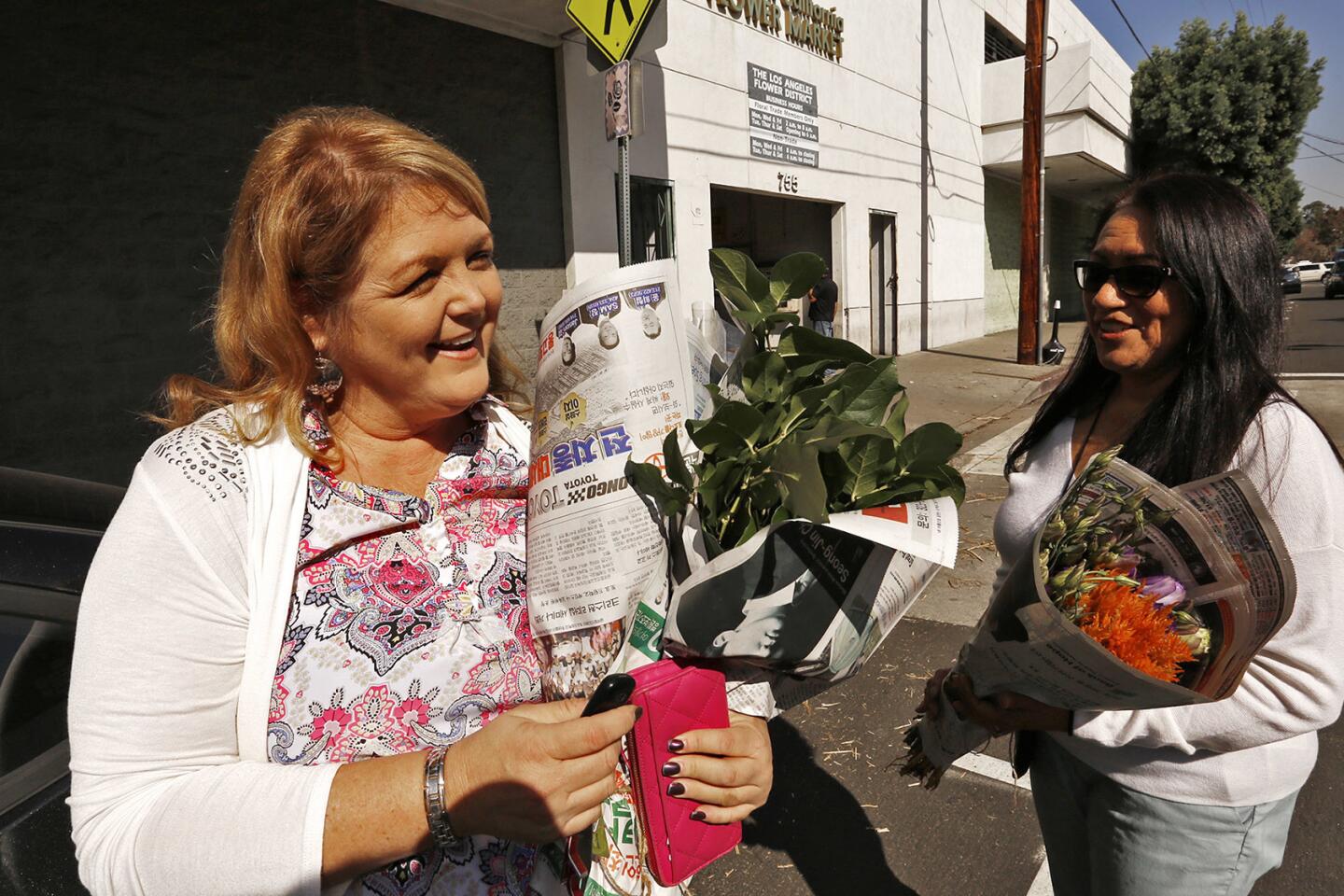Housing, restaurants and offices are planned for $100-million L.A. Flower District project
- Share via
The Southern California Flower Market, a downtown Los Angeles institution, hopes to transform its property into a mixed-use community of offices, apartments and restaurants — while still selling the roses, carnations and snapdragons it has for more than a century.
The plans, recently filed with the city, are meant to fund the redevelopment of the market’s aging home at 755 Wall St. and enable the 104-year-old business to stay in an increasingly luxurious and residential city center.
“Ultimately, we want to stay in downtown Los Angeles,” said Scott Yamabe, the market’s executive vice president. “Our objective is to improve the area and maintain the Flower Market.”
The solution, Yamabe says, is development.
Specifically, plans call for the demolition of one building to construct a 15-story residential tower with around 320 units, 10% of them below market rate, Yamabe said.
At the base of the tower would be shops and restaurants that would spill out onto a paseo connecting to the other Flower Market building, which will be renovated. There, flowers would be sold on the ground floor, and creative offices on the second story could be leased to technology firms and others.
The market is part of the larger Los Angeles Flower District that covers multiple blocks around Wall between 7th and 8th streets. It draws flower retailers, event planners and others who arrive in the pre-dawn hours to purchase cut flowers at wholesale prices.
The district is only a short walk from the heart of skid row, and the $100-million plus Southern California Flower Market project is the latest investment in an area that until recently was left out of downtown’s development boom.
Last month, developers filed plans to build a 33-story residential tower across from the flower market.
On Wednesday, the Los Angeles City Council took the first step in giving the market a shot at its plans. It approved a motion from area Councilman Jose Huizar to start the approval process, which will require a general plan amendment since housing on the property is currently prohibited.
Such general plan changes can be initiated only by the City Council, Planning Commission or the director of planning and have become increasingly controversial in today’s development boom.
They are the subject of two upcoming ballot measures, one in November that would impose additional hiring and affordability requirements for such projects, and another in March that would impose a two-year moratorium on them, while making future changes far more difficult.
In an email, Huizar spokesman Rick Coca said the councilman believes in the “transformative nature of this project” and looks forward to it going through a “robust public process.”
“The Flower Market is a city of Los Angeles institution, but they face challenges,” Coca said. “We are taking the lead on this because these kind of applications often get bogged down in bureaucratic malaise, and we want to make sure that this has the proper public review, while not taking any more time than necessary.”
Yamabe said the Flower Market’s problems stem from the age of its structures, one built in the 1960s, the other in the 1980s. Problems include outdated refrigeration systems and freight elevators. “Unfortunately our buildings are so obsolete, we are spending tons of money maintaining them,” he said.
The market — a collection of around 50 individual tenants — has also had to contend with a changing industry.
In 1912, when Japanese American farmers opened the market in another location nearby, the industry was dominated by California flower growers. In the following decades, the Southern California Flower Market and the competing Los Angeles Flower Market dominated the wholesale business in the region.
But in the 1980s, imports — particularly from Central and South America — started flooding the market.
“The imports started showing up and bypassed the flower market. In the old days when 100% of flowers were California grown, everyone came here because there were no alternatives,” Yamabe said.
Companies can now simply buy directly from importers; refrigerated warehouses have popped up around LAX to handle the perishable goods.
Kasey Cronquist, chief executive of the California Cut Flower Commission, said imports surged after 1991. That’s when the U.S. enacted a trade pact that made it cheaper for flowers to be imported from a handful of South American countries, including Colombia, in the hopes of supporting industries other than drug production.
“You have seen a massive change in where flowers came from,” Cronquist said. “Today you are approximately over 80% being imported, primarily from Colombia and Ecuador.”
Even the competition along Wall Street has increased. Today, the Los Angeles Flower District includes not just the Southern California and Los Angeles flower markets, but a handful of smaller sellers located in the surrounding blocks, as well as the large California Flower Mall on San Pedro Street.
Despite the changes, Yamabe said the market has “fared pretty well” and the main reason for the redevelopment is to repair the aging buildings.
He acknowledged, though, that the new project would help beyond that goal. Additional revenue from apartments and shops would support the business, while the revamp would reduce space to sell flowers.
“It will tighten up the market and make it a little stronger and really position ourselves hopefully for the next 40 to 50 years.”
Yamabe said he hopes construction can start in two years.
Follow me @khouriandrew on Twitter
More to Read
Inside the business of entertainment
The Wide Shot brings you news, analysis and insights on everything from streaming wars to production — and what it all means for the future.
You may occasionally receive promotional content from the Los Angeles Times.


